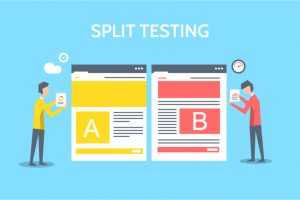Copywriters write copy that sells to people and educates them about products and services. They provide the words for things like advertisements, sales emails, brochures, and commercial websites.
Copywriting is a necessity and pays better than editorial work, so no surprise that many freelance journalists and content writers gravitate to it. A key difference is that copywriting focuses on commercial, with a goal of persuasion and measurable effectiveness. Here’s a guide to some of the essential copywriting terminology

A/B or Split Testing
This mechanism lets marketers test two versions of a piece of copy – e.g., a landing page or subject line, on a sample audience to see which one performs best. They then send out the best-performing version to their whole audience. For this reason, copywriters sometimes write different versions of the same message.
B2B
A business-to-business (B2B) company sells to other businesses, whereas a B2C business sells directly to consumers. Copywriters must learn to tailor their writing style to the audience, whether a business or an individual customer.
Benefits and Features
The difference in benefits and features is key to copywriting success. Features are neutral facts about a product or service, with the copywriter’s job being to turn features into what the customer might care about – benefits. So “razor comes with five blades” (feature) becomes “your closest shave ever!” (benefit). The classic way to turn a feature into a benefit is to keep asking “So what?” until you come up with something people show an interest.
Brochureware/Collateral
These are generic terms for marketing copy about a product or service.
Call to Action (CTA)
All marketing materials need a CTA, which is what you want the reader to do next, e.g., “Buy now,” or “Request a callback.” As a copywriter everything you write should ultimately steer people toward acting on that CTA.
Conversion
Conversion is the desired outcome for the created copy, e.g., enquiries, social shares, or sales. Say I send a direct mail to 1,000 people to persuade them to ask about a new kind of auto insurance. If ten people call in as a result, then my conversion rate would be one percent.
CRM (Customer Relationship Management)
If a client asks for copy for their CRM activity, they want marketing emails written, and perhaps the copy for the corresponding landing pages.
DM (Direct Marketing)
DM means things sent cold to people in an effort to sell to them. Sales letters, fliers, and marketing emails are all forms of DM – and writing these is classic copywriting work.

Hook
A hook is a key thought, a catchy thought, destined to capture the reader’s attention and subsequent thought. E.g., “Did you know 25 percent of burglaries happen when people are at home?” (security system).
Kicker
A follow-up to your headline that delivers an additional punch.
For example:
RETIRE RICH! (hook)
Learn how to maximise your assets the Warren Buffet way… (kicker)
Landing Page
A landing page is a webpage designed to generate conversions. This page is where users “land” from reading adverts, emails, search results pages, etc. Landing pages have to convert as many people as possible, and are the subject of much debate and advice.
Persuasion
Refers to a series of psychological nudges that copywriters use to encourage people to act on their words. These include social proof (“4 out of 5 pet owners prefer it!”), urgency (“free shipping and handling before midnight!”), and reciprocity (“buy one get one free”).
USP (Unique Selling Proposition)
This item makes a point that distinguishes your product or service from its competitors – and often serves as the focus of your copy. “The makeup of makeup artists” is a great example. More info and examples here. Sometimes the copywriter’s job is to make things sound unique that aren’t really unique.
Just understanding the terminology can educate you on how to write commercial copy. Take this knowledge and study existing copy already used in successful presentations, and you’ll be ahead of the game in pitching your own work.
BIO: Dan Brotzel is co-author of Kitten on a Fatberg (Unbound, forthcoming).
Leave a Reply